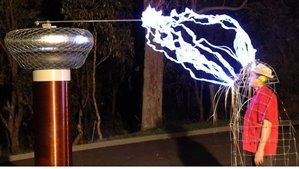ebee:
"have to be away from a kitchen sink "
Depends on all circumstances in the situation installed Tomm, not a fixed dimension in the regs (all of guidances are worth considering.)
Thanks again for good advice as with all of the other replies too.
Thanks everyone!!
regards...
davezawadi (David Stone):
You are a bit behind the times UKPN, the "bond everything" 15th edition was found to increase danger (particularly in commercial kitchens), as they became conductive environments. Why would you want to bond an otherwise unconnected conductive part anyway, why not bond the saucepans?
Hiya, that's fair enough but, as you state more to do with 'commercial' kitchens BUT... why not earth EVERYTHING, (including the steel pans, haha)???
WHAT, if there was a damaged cable that was touching some pipework that wasn't bonded???
BRING BACK RYB, hahaha!!
cheers...
OMS:
Although it has to be said, that if you have say a commercial kitchen, and you re establish a zone of protection by bonding extraneous conductive parts back to the earth terminal on the kitchen DB (which is local to the kitchen) you will substantially reduce touch voltages - the basis physics says so.
That doesn't mean bonding the legs of moveable tables and the like, I agree - but as a principle re establishing that zone of protection is no bad thing
Regards
OMS
See my other questions, further down...
regards...
WHAT, if there was a damaged cable that was touching some pipework that wasn't bonded???

mapj1:
There are however some domestic installations where bonding the person to ground makes sense, but I'd suggest these occur quite rarely.
A touch over a megavolt here at ~100KHz, but average current of less than milli-amps path completes by body capacitance to ground and from ground to underside of HV coil.
I wonder if it would trip an AFDD ?
I want one for my house!!!
As per usual... lots of interesting replies, thanks!!
regards...
We're about to take you to the IET registration website. Don't worry though, you'll be sent straight back to the community after completing the registration.
Continue to the IET registration site